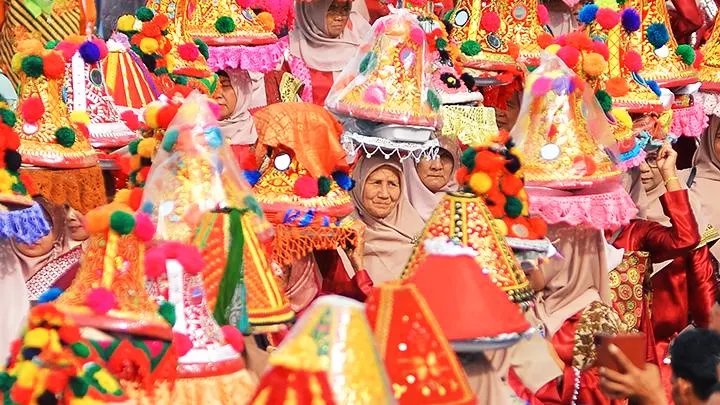Indonesia, with its cultural diversity, radiates beauty through its traditional arts.
One of the cultural heritages that captivates the heart and eyes is the Barong dance.
This dance is not just a performance but a window that opens the world to the richness of Indonesian philosophy, beliefs and beauty of art.
Barong Dance Background:
The Barong dance, originally from Bali, has become an inseparable part of the life of the local population.
Barong, a dramatic dance with colorful costumes and impressive masks, tells the story of the eternal battle between good and evil.
The main character, Barong, symbolizes goodness, while his opponent Rangda symbolizes the power of darkness.
Costumes and masks: living works of art:
The Barong dance costume is an amazing work of art.
Every detail of the suit is made from colorful traditional Balinese fabrics, reflecting the delicacy and precision of the skilled hands of local artisans.
Barong masks with mystical animal facial expressions add a magical dimension to the performance.
Their every move, combined with the bright colors and intricate mask designs, create an unforgettable viewing experience.
Philosophy behind dance movements:
The Barong dance is not only an entertainment dance, but a reflection of the philosophy of life of the Balinese people.
Its soft and energetic movements reflect the balance between humans and nature.
This dance also shows the courage to accept the challenge when Barong faces Rangda in battle.
Through its beautiful movements, this dance teaches how difficult life is and the importance of maintaining kindness.
Music and sound: the magical accompaniment of the Barong dance:
Barong dance is incomplete without musical accompaniment and distinctive sounds.
The sounds of gamelan, drums and flutes combine harmoniously to create a magical atmosphere that captivates the audience. The rhythm of the music that accompanies the dance movements gives life to the show, as if nature itself were dancing with indescribable beauty.
Sustainability and protection of monuments:
Although Barong dance has been an important part of Balinese culture for centuries, the challenges of modernization and social change have put the sustainability of this cultural heritage in the spotlight. Efforts to preserve and develop traditional dances such as Barong are very important to ensure that future generations can continue to enjoy the beauty and deep meaning of this art.
Global attraction and cultural tourism:
Barong dance is not only the pride of the local community, but also attracts global attention as part of Indonesia's cultural heritage.
The Barong dance performance is a special attraction for tourists who want to experience the rich culture and spirituality of Bali. This means that this art not only lives on the local stage but also reaches the international stage.
Eternal beauty:
Barong dance is not just a dance performance but an artistic miracle that radiates beauty and deep meaning. Combining mesmerizing movements, dazzling costumes, magical music and rich philosophy, Barong dance takes audiences on a journey through the rich culture of Indonesia.
A legacy that not only inspires pride but also teaches the values of eternal life.














































